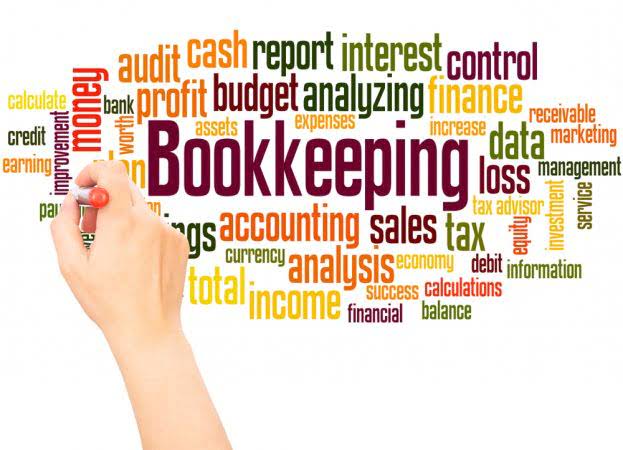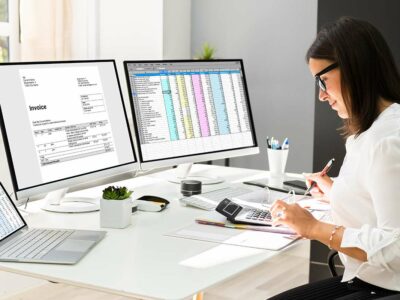You can find your bank account number printed at the bottom of your paper check. This is the second sequence of numbers, printed between the nine-digit routing number and the shorter check number. A bank account number is a unique string of numbers and, sometimes, letters and other characters that identify a particular bank account and grant access to it. This often is one of the most important account numbers people have for transacting business. Clients can have several accounts, each with its own account number, although the routing number (the financial institution that maintains the customer’s account) stays the same.
AccountingTools
If a thief has your bank and routing numbers and somehow manages to get access to your login name and password, big trouble may be on the horizon. Just because your bank account number alone doesn’t make you vulnerable doesn’t mean that you shouldn’t protect it. If a scammer had your account number and other info — perhaps your driver’s license number and/or your home address — they might be able to make illegal purchases online.
What Is An Accounting Code?
- Write the amount of your check in numerical format (for example, “1,250.00” instead of “one thousand two hundred fifty”) in the dollar box.
- Nowadays, the checking account number is used across the world to make financial transactions.
- This article will examine the precise origins and significance of these numbers.
- Malware, an account recovery procedure, or phishing are some means for intercepting such data.
- Businesses now often employ a hard-to-hack master password to unlock an electronic vault of customers’ bank account numbers and other sensitive data.
An accounting code is a numbering system for the chart of accounts. The chart of accounts is an organized list of all business accounts that stores financial transactions. A uniform accounting code https://marylanddigest.com/navigating-financial-growth-leveraging-bookkeeping-and-accounting-services-for-startups/ made up of letters and/or numbers facilitates data organization and aids accounting error inquiries. The type of code used is different per industry and depends on how many accounts a company has.
What Is a Bank Account Number?
If not, someone could be able to access your accounts illegally using your details. The former identifies your bank account, while the latter is specific to your credit card. An account number identifies your individual account, while a routing number (or sort code in some countries) identifies your specific bank branch. Although every debit card is linked to a particular checking account, the debit card number is different from the checking account number. That makes it easier to replace a lost or stolen debit card without affecting the underlying checking account. What if you see signs that they are using it for fraudulent transactions?
But increasingly, especially when compared with other technologies, they have become a source of errors, friction, and fraud. The exception to the above rules is American Express, whose cards have only 15 digits. That’s because, while other card networks rely on banks to issue their cards, American Express issues its own cards. • Your routing number is the series of numerals that identifies your financial institution, or where the account is held.
Call your bank’s customer service number, contact a rep by chat, or, if you use a traditional vs. online bank, go to your local branch. Explain your situation, and take steps to get your assets transferred to a new bank account, get new checks printed, and get a new debit card if needed to safeguard your cash. Bank account numbers are essential pieces of information that identify your account and allow you to carry out transactions. They are unique identifiers that help banks differentiate your account from others, and they typically include a routing number, account number, and check number.
He has been a manager and an auditor with Deloitte, a big 4 accountancy firm, and holds a degree from Loughborough University. Accounts that use multi-factor authentication, which adds a second security layer to safeguard an account, are becoming more accounting services for startups common. The Federal Reserve District Office head branch, which the bank is a part of, is indicated by these numerals. Austin has been working with Ernst & Young for over four years, starting as a senior consultant before being promoted to a manager.
Hierarchical Coding
You are now leaving the SoFi website and entering a third-party website. SoFi has no control over the content, products or services offered nor the security or privacy of information transmitted to others via their website. We recommend that you review the privacy policy of the site you are entering. SoFi does not guarantee or endorse the products, information or recommendations provided in any third party website.
The arrangement method was created in 1910 to help sort checks before distributing them to the right owners. The account number is utilized to send payments to the appropriate party for the same purpose. However, the check number and account number might occasionally be mixed up. An ACH transfer is a method of sending or receiving money electronically. The clearinghouse is the designated financial intermediary responsible for validating and finalizing transactions between a buyer and a seller. All routing numbers, including ACH, are included in ABA routing numbers.
If someone has access to both your bank account and routing number, they could make fraudulent ACH transfers and payments out of your account. More commonly, a hierarchical code for a chart of accounts utilizes dashes instead of decimals. The uniform accounting code for a multimillion-dollar company would number division first, department second, and account last. Payroll processing offices use checking account numbers to set up direct deposit payments for employees.
- If you want to cash the check, you may be able to do it at that bank (any branch location—it doesn’t necessarily have to be at the same address shown on the check).
- It is created automatically by applying the Luhn Formula to the credit card’s last fifteen digits and may be used to validate the complete credit card number.
- IBAN follows a structure of checking digits to facilitate sanity check, which is all about detecting and eliminating instances of duplicated, omitted, or mistyped characters.
- Bank account numbers are essential pieces of information that identify your account and allow you to carry out transactions.
- But increasingly, especially when compared with other technologies, they have become a source of errors, friction, and fraud.
This makes it easier for them to protect themselves in case of check fraud. The division code remains fixed at 04 (mobile division) whereas the department code changes to either 01, 02, or 00. These are just some of the means of protecting users’ bank account numbers https://wyomingdigest.com/navigating-financial-growth-leveraging-bookkeeping-and-accounting-services-for-startups/ in an increasingly vulnerable online environment. Malware, an account recovery procedure, or phishing are some means for intercepting such data. As a result, modern firms strive to protect consumers’ account details in an increasingly dangerous internet world.
An account number is a unique string of numbers, letters, and other characters that identify a specific financial account. Examples of account numbers include routing numbers and credit card numbers. As a business develops and grows it establishes departments such as, for example, production, design, sales & marketing, and accounting departments. In order to record accounting information by department a further two digits are used to form a department code. The department code is then added to the current three digit account code to create a 5 digit chart of accounts numbering system.


